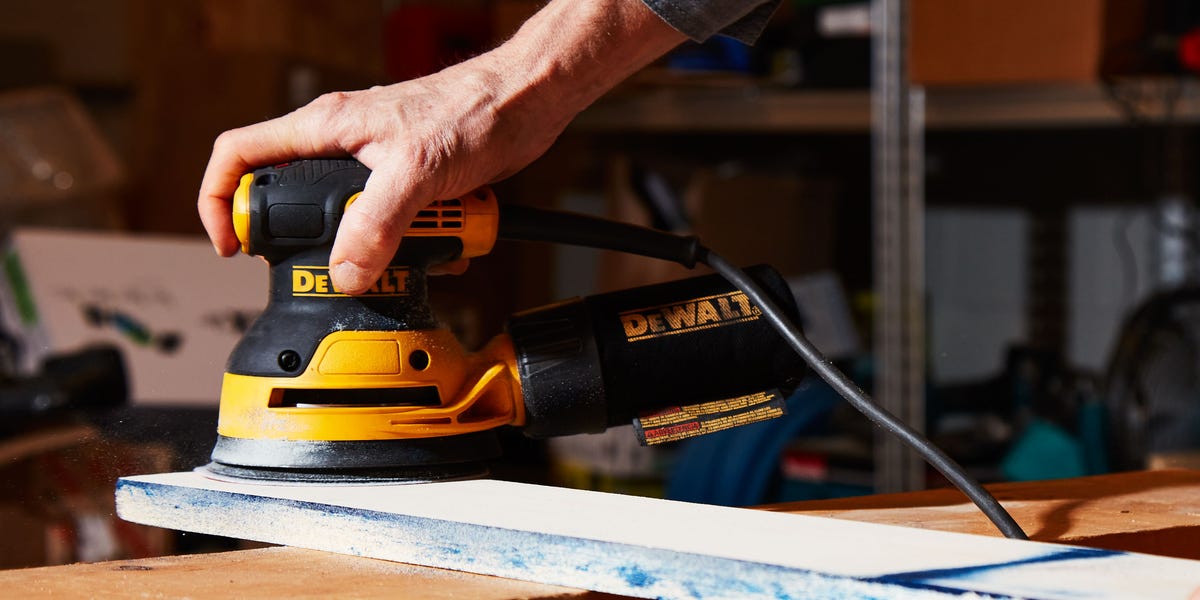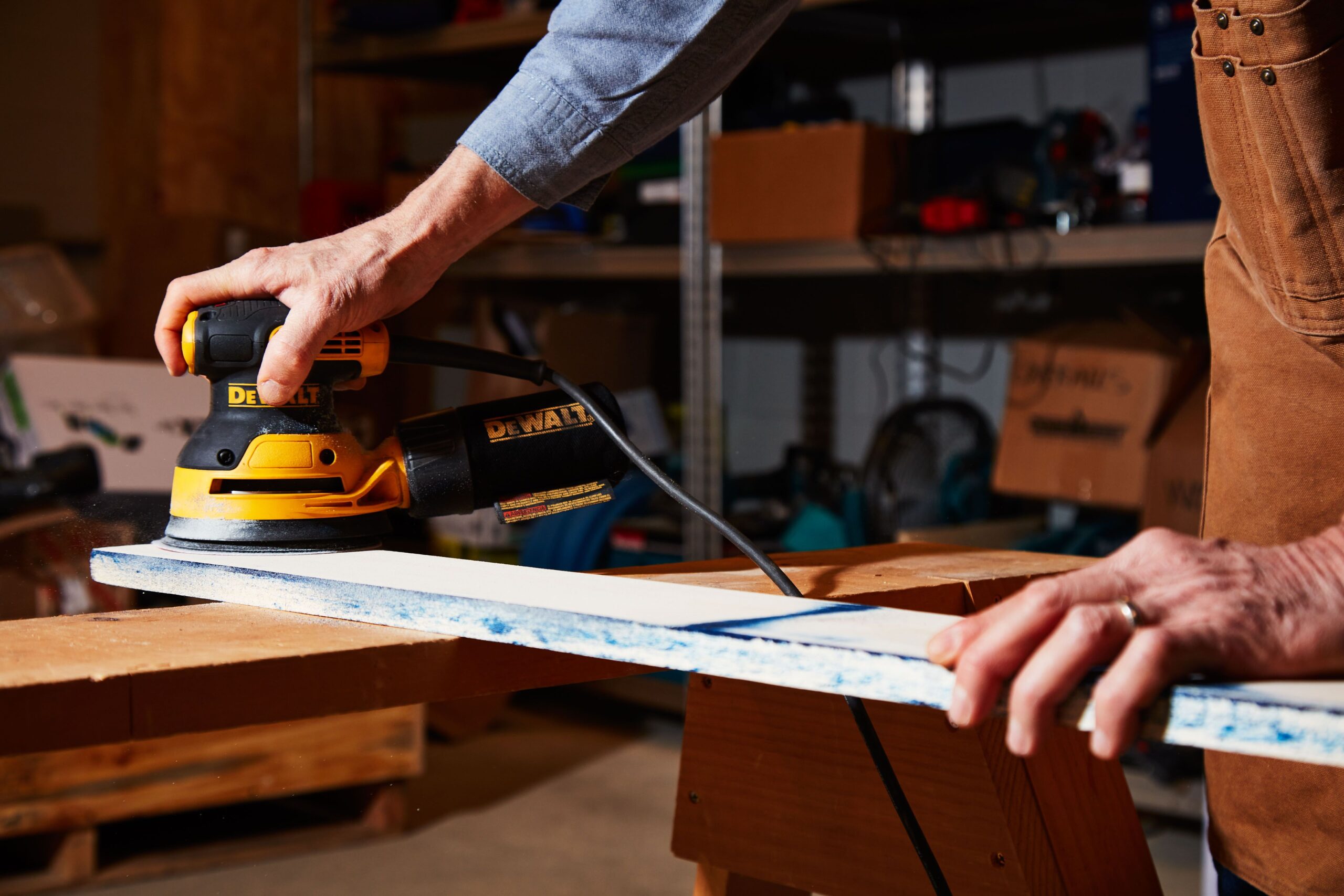Are you wondering, “Is a palm sander good?” Well, you’ve come to the right place! Let’s dive into the world of palm sanders and explore whether they’re a worthy addition to your toolbox.
First things first, what exactly is a palm sander? Picture this: a small, hand-held power tool that helps you smooth surfaces effortlessly. It’s like having your own mini sanding superhero working right in the palm of your hand!
Now, let’s get down to business. Is a palm sander good? What makes it stand out from other sanding tools? Stick around to find out as we unravel the benefits and potential drawbacks of this nifty little tool. So, grab a seat and let’s explore the world of palm sanders together!
Discover the Benefits of a Palm Sander
A palm sander is a versatile tool that can make your DIY projects a breeze. With its compact size and easy maneuverability, it’s perfect for smoothing surfaces and removing imperfections. The orbital motion ensures smooth and consistent sanding, while the ergonomic grip reduces hand fatigue. Whether you’re tackling small woodworking projects or prepping surfaces for painting, a palm sander is a valuable addition to your toolkit.

Is Palm Sander Good? Exploring the Benefits and Uses
The Versatility of a Palm Sander
A palm sander is a versatile tool that can be incredibly useful for various woodworking and DIY projects. With its compact size and lightweight design, a palm sander is easy to maneuver and handle, making it suitable for both professionals and beginners. One of the primary advantages of a palm sander is its ability to smooth and finish surfaces effortlessly.
Whether you’re working on a large furniture piece or a small wooden craft, a palm sander can help you achieve a smooth and professional-looking finish. Its small sanding pad allows for detailed work and reaching tight corners and edges that larger sanders may struggle with. Additionally, the orbital motion of a palm sander minimizes swirl marks, ensuring a consistent and even finish.
Aside from its sanding capabilities, a palm sander can also be used for other tasks such as removing paint or varnish from surfaces. By attaching the appropriate sandpaper grit, you can effectively strip away old finishes and prepare a surface for refinishing. This versatility makes a palm sander a valuable tool to have in any woodworking or DIY enthusiast’s arsenal.
Palm Sander vs. Other Sanding Tools
When it comes to sanding tools, there are several options available in the market. Understanding the differences between a palm sander and other sanding tools can help you determine whether a palm sander is the right choice for your project.
Compared to a belt sander, which has a larger sanding surface, a palm sander may take longer to complete a sanding task. However, the palm sander is more maneuverable and allows for more precise sanding due to its smaller size. On the other hand, a belt sander excels in removing larger amounts of material quickly, making it ideal for heavy-duty sanding or leveling uneven surfaces.
When comparing a palm sander to an orbital sander, the main difference lies in the motion. While an orbital sander moves in a circular motion, a palm sander moves in an orbital or elliptical pattern. This difference affects the amount of material being removed at once and the overall finish achieved. The palm sander’s orbital motion reduces the risk of leaving swirl marks, making it a popular choice for finishing touches on surfaces.
How to Use a Palm Sander Safely and Effectively
Using a palm sander is relatively straightforward, but there are essential safety precautions to keep in mind for a successful and accident-free experience. Firstly, it’s crucial to wear protective gear such as safety glasses and a dust mask to shield yourself from flying debris and the inhalation of fine particles.
Prior to sanding, ensure that the surface you’re working on is clean and free from any nails or staples that could damage the sandpaper or cause injury. Familiarize yourself with the different sandpaper grits and choose the appropriate one for your project. Remember, coarse grits are suitable for removing material quickly, while finer grits are used for achieving a smooth finish.
When using a palm sander, maintain a steady and even pressure to avoid creating uneven surfaces or grooves. Move the sander in the direction of the grain for optimal results and take breaks to prevent overheating the tool or the surface being sanded. Finally, after you’re done sanding, clean up the area and dispose of the used sandpaper and any dust particles properly.
Choosing the Right Palm Sander for Your Needs
Considerations When Buying a Palm Sander
When it comes to selecting a palm sander, there are a few key factors to consider that can help you make an informed decision:
- Power Source: Palm sanders are available in corded and cordless versions. Corded sanders provide consistent power without the need for battery replacements or recharging, while cordless sanders offer increased mobility and convenience.
- Sanding Speed: The speed at which a palm sander operates can vary. Higher speeds can result in more efficient sanding, but they may be harder to control. Consider your experience level and the types of projects you’ll be working on when choosing the appropriate sanding speed.
- Vibration Control: Some palm sanders come equipped with features to minimize vibrations, increasing user comfort and reducing fatigue during prolonged sanding sessions.
- Dust Collection: Look for a palm sander with effective dust collection capabilities to keep your work area clean and minimize the amount of dust particles you inhale.
Palm Sander Tips and Tricks
To get the most out of your palm sander, consider the following tips and tricks:
- Start with a coarse-grit sandpaper to remove material efficiently, and gradually switch to finer grits for a smooth and polished finish.
- Avoid applying excessive pressure on the sander, as this can result in uneven sanding or damage the surface.
- Use sanding pads specifically designed for palm sanders to ensure a proper fit and avoid damaging the tool.
- Regularly check the sandpaper for signs of wear or clogging and replace it as needed to maintain optimal sanding performance.
- Experiment with different sanding techniques and motions to achieve desired results on various surfaces.
Conclusion
In conclusion, a palm sander can be a valuable tool for any woodworking or DIY enthusiast. Its versatility, compact size, and ease of use make it an excellent choice for achieving smooth finishes on various surfaces. By understanding its strengths and limitations and following proper safety precautions, you can harness the power of a palm sander to enhance your projects and achieve professional results.
Key Takeaways: Is Palm Sander Good?
- A palm sander is a good tool for small woodworking projects.
- It is easy to use and maneuver, making it suitable for beginners and DIY enthusiasts.
- Palm sanders provide a smooth finish on surfaces, helping to achieve professional-looking results.
- They are lightweight and compact, allowing for better control and precision.
- However, palm sanders may not be ideal for large or uneven surfaces, where a larger sander would be more efficient.
Frequently Asked Questions
When it comes to choosing a palm sander, there are important factors to consider. To help you make an informed decision, we’ve answered some frequently asked questions below.
1. What are the advantages of using a palm sander?
A palm sander is a versatile power tool that offers several benefits. First, it reduces the amount of manual sanding required, saving you time and effort. It also provides a consistent finish, ensuring smooth and even surfaces. Additionally, a palm sander is compact and lightweight, making it easy to maneuver and control. Whether you’re sanding wood, metal, or plastic, a palm sander can deliver excellent results.
Furthermore, using a palm sander allows you to reach tight corners and small spaces that other sanding tools cannot reach. This makes it ideal for intricate projects or refinishing furniture. Overall, the advantages of using a palm sander include efficiency, improved finish quality, and versatility.
2. Can a palm sander be used on different types of materials?
Yes, a palm sander can be used on a variety of materials. It is commonly used on wood surfaces, including furniture, cabinets, and flooring. The fine-grit sandpaper used with a palm sander helps to smooth out imperfections, remove old finishes, or prepare surfaces for painting or staining. However, a palm sander is not limited to wood; it can also be used on other materials such as metal and plastic. Just ensure you choose the appropriate sandpaper grit for the specific material you are working on.
Keep in mind that when sanding materials other than wood, you may need to take extra precautions to avoid damaging the surface. For example, using a lighter touch or lower sanding speed might be necessary. Always consult the manufacturer’s guidelines and use appropriate safety measures when working with different materials.
3. Are palm sanders suitable for beginners?
Yes, palm sanders are suitable for beginners. In fact, they are often recommended for those who are new to sanding. Palm sanders are user-friendly and easy to operate, with a comfortable grip that minimizes fatigue during extended use. They also provide consistent results with less risk of sanding unevenly or gouging the surface. With practice and proper technique, beginners can achieve professional-looking finishes using a palm sander.
When starting out, it’s important to choose the right sandpaper grit for your project and go through proper safety guidelines. Take your time and experiment on scrap pieces to get a feel for the tool’s operation and the desired finish. With a little patience and practice, even beginners can master the art of sanding with a palm sander.
4. Can I use a palm sander for heavy-duty sanding?
Palm sanders are primarily designed for light to medium-duty sanding tasks. They excel at tasks such as surface preparation, refinishing projects, and smoothing out small imperfections. However, for heavy-duty sanding or the removal of significant material, a palm sander may not be the most efficient option.
For heavy-duty sanding, you might want to consider using a belt sander or an orbital sander with more power and wider sanding surface. These tools are better equipped to handle larger projects, rough surfaces, or faster material removal. It’s important to choose the right tool for the job to achieve the best results and prevent unnecessary strain on the palm sander.
5. Are all palm sanders created equally?
No, not all palm sanders are created equally. While they may appear similar, there are significant differences in terms of power, durability, and features. Some palm sanders offer variable speed settings, allowing you to customize the sanding action to the specific task at hand. Others may have built-in dust collection systems to keep your work area cleaner.
When selecting a palm sander, it’s important to consider the quality and reputation of the brand, as well as the specific features that meet your needs. Read reviews, compare models, and choose a palm sander that is known for its reliability and performance. Investing in a well-built palm sander will ensure better results, durability, and overall satisfaction with your sanding projects.

Which Sander is BETTER? || Random Orbital VS 1/4 Sheet Palm Sander
Summary
If you’re wondering if a palm sander is good, here are the key takeaways. Palm sanders are great for small to medium-sized projects, perfect for beginners or DIY enthusiasts. They are lightweight, easy to control, and can quickly smooth out surfaces. However, they may not be suitable for large or heavy-duty projects. It’s important to wear protective gear and be careful when using any power tool. So, if you have a small project, a palm sander can be a handy tool to have!
To sum up, palm sanders are good for small projects, easy to handle, and great for beginners. However, they may not handle heavy-duty jobs, so be cautious. Remember to prioritize safety and protect yourself while operating any power tool.
